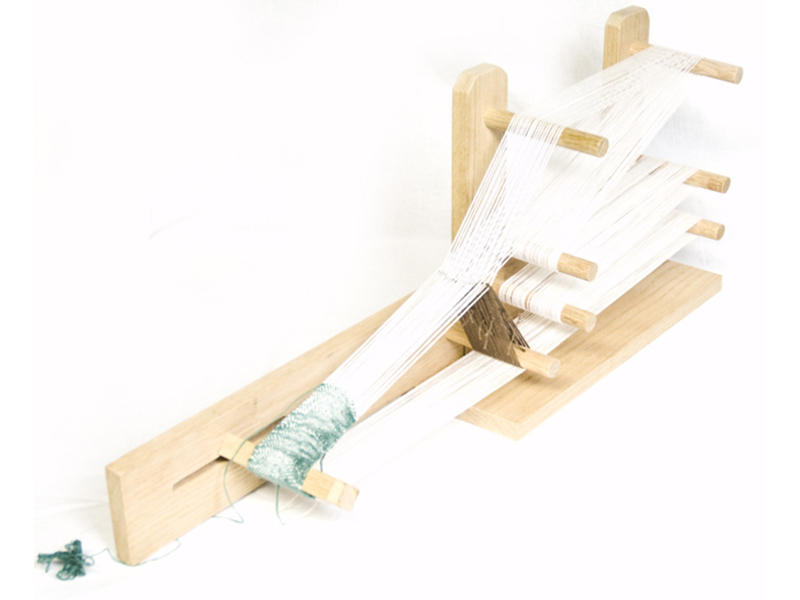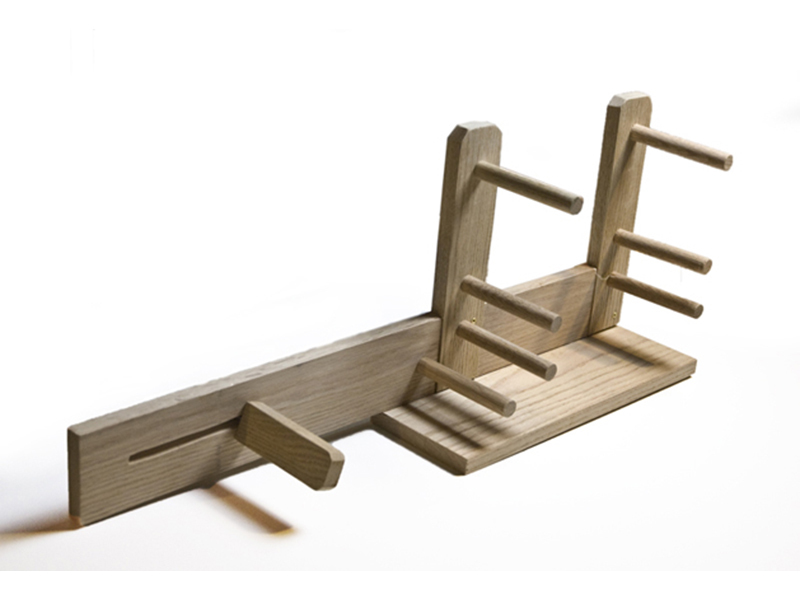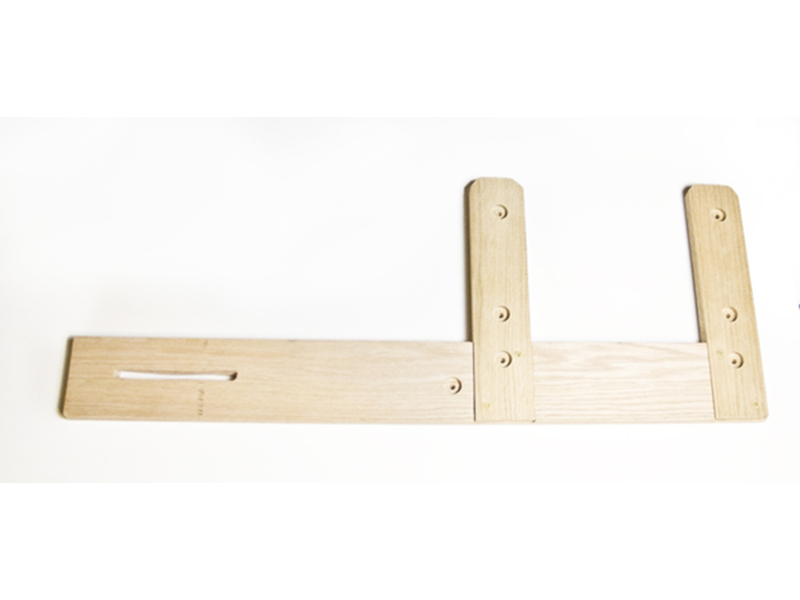Weaving is one of my favorite crafts because it’s meditative and challenging, practical and artistic. It combines plain-woven cloth’s simple elegance with the astounding complexity of a kilim split-stitch tapestry.
I love the way woven straps look, but the idea of warping my floor loom just to make something as narrow as a strap for my bike messenger bag seemed like overkill. Then I came across a wonderful and traditional solution – the inkle loom! This loom is relatively easy to build, costs under $30 to purchase all of the supplies (even less if you have the right screws around), and takes only an hour to warp and start weaving.
The slot-and-peg tensioning rod allows you to move the continuous warp through the loom and weave the entire length. That’s eight feet of warp that you can weave all in one go without stopping. You can make it a simple plain weave or tapestry style.
Optional:
A powered rotary hand saw, table saw, or miter saw would be ideal for making quick work of cutting your hardwood. It can be done with the hand saw, but because we are using hardwood, it will take persistence and patience. Just don’t feel like you have to buy a new saw to build your inkle loom.
Project originally posted on CRAFT.














